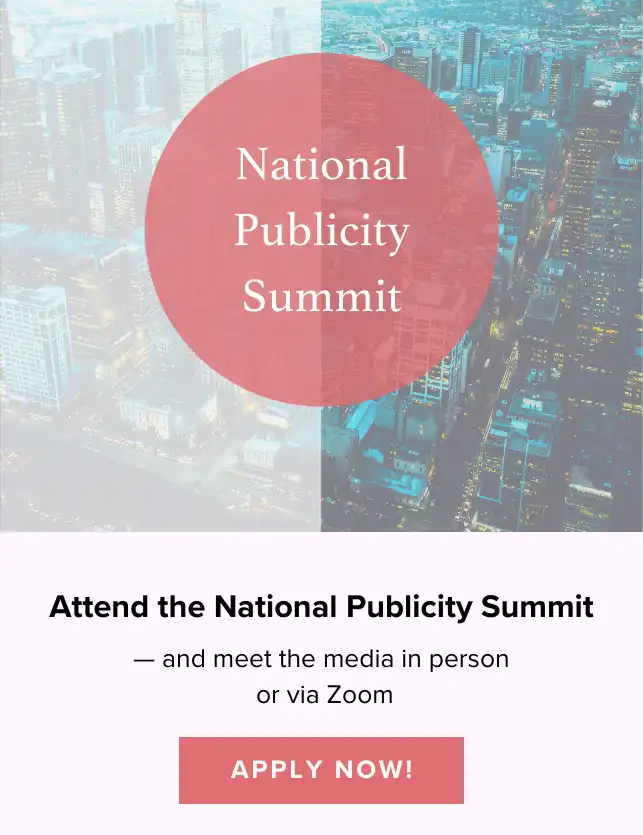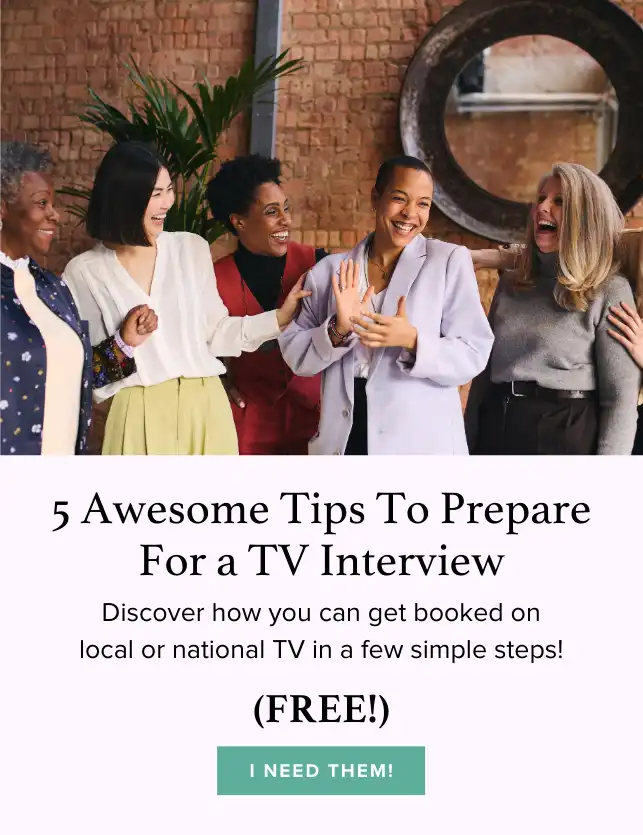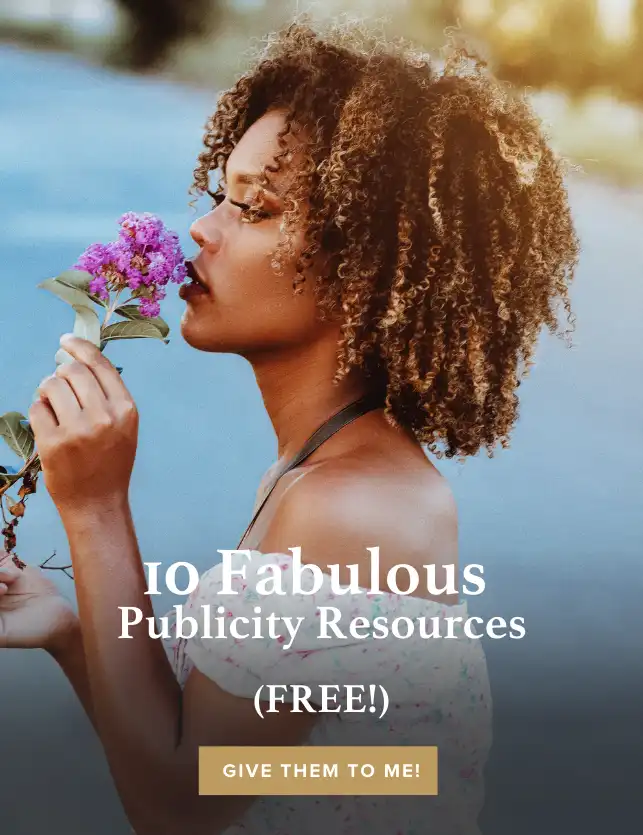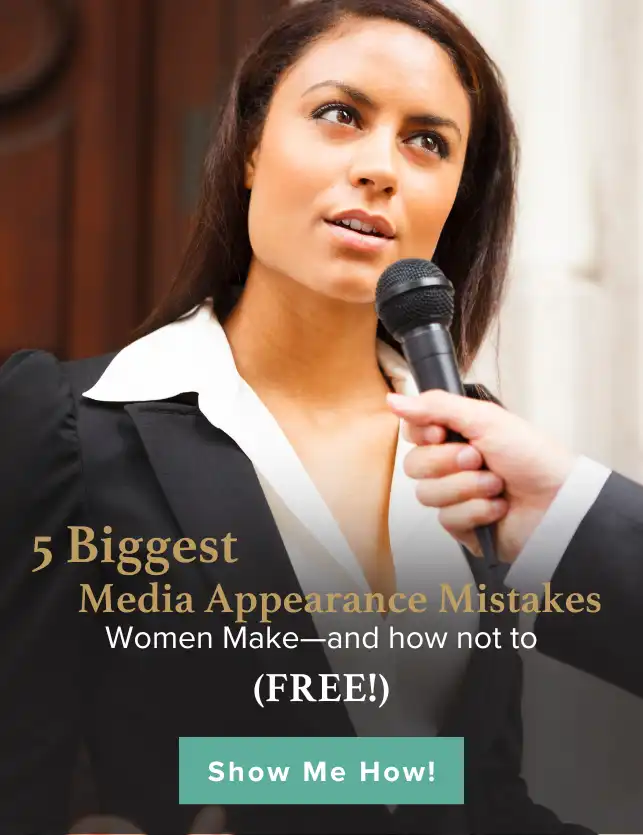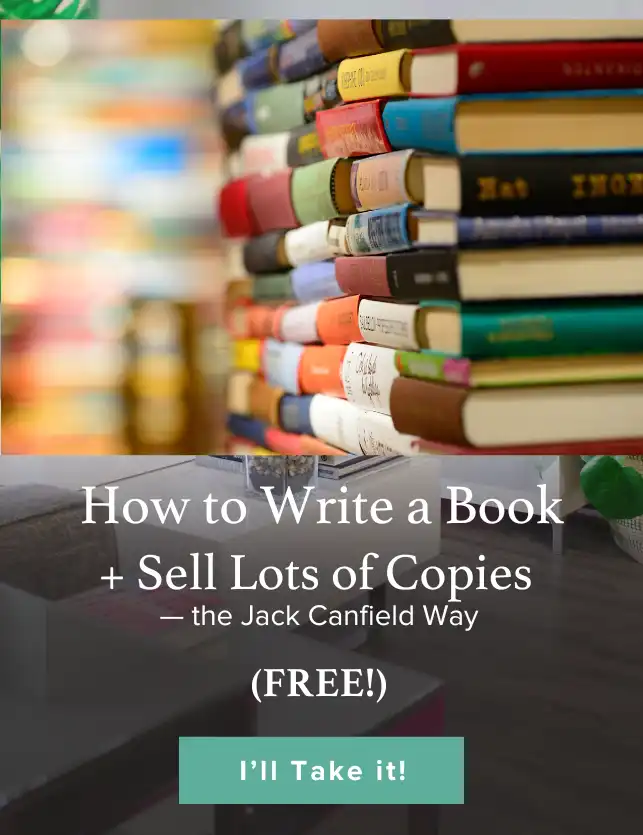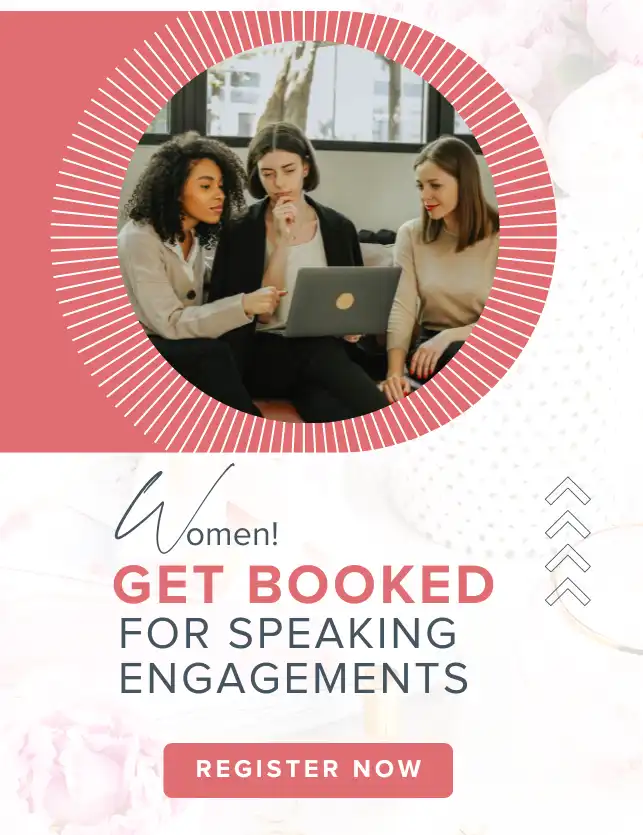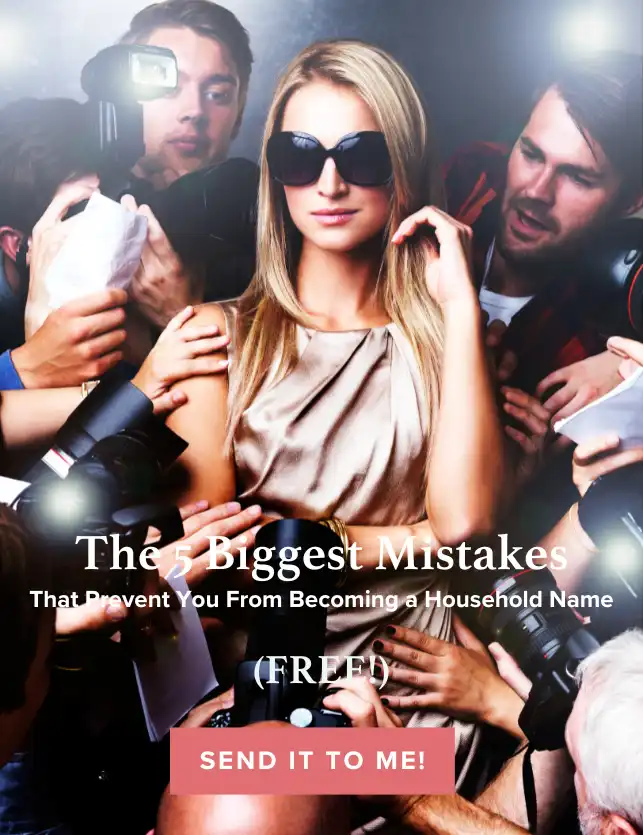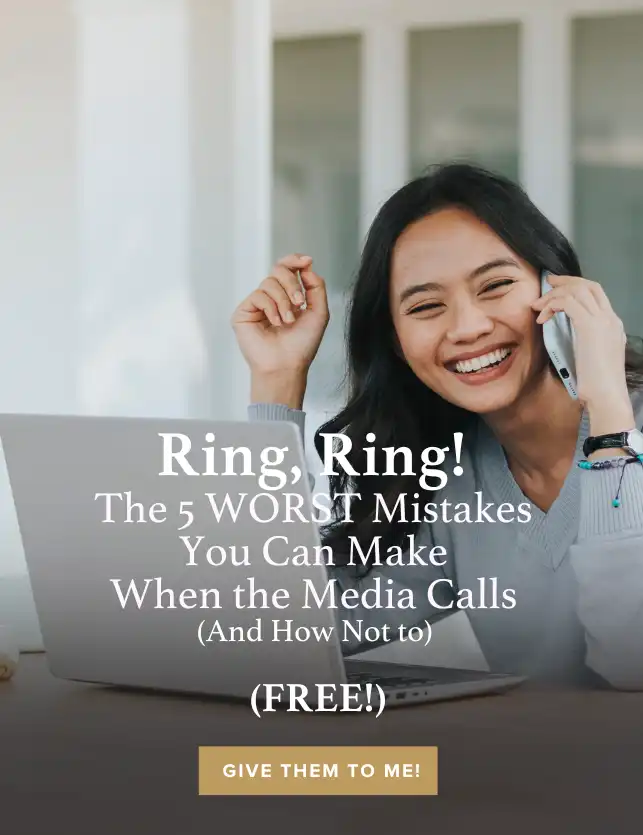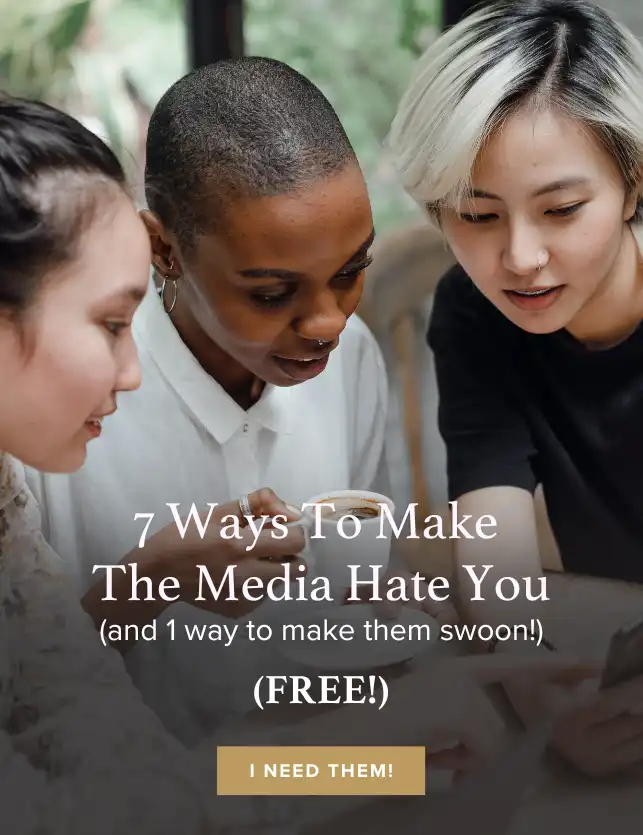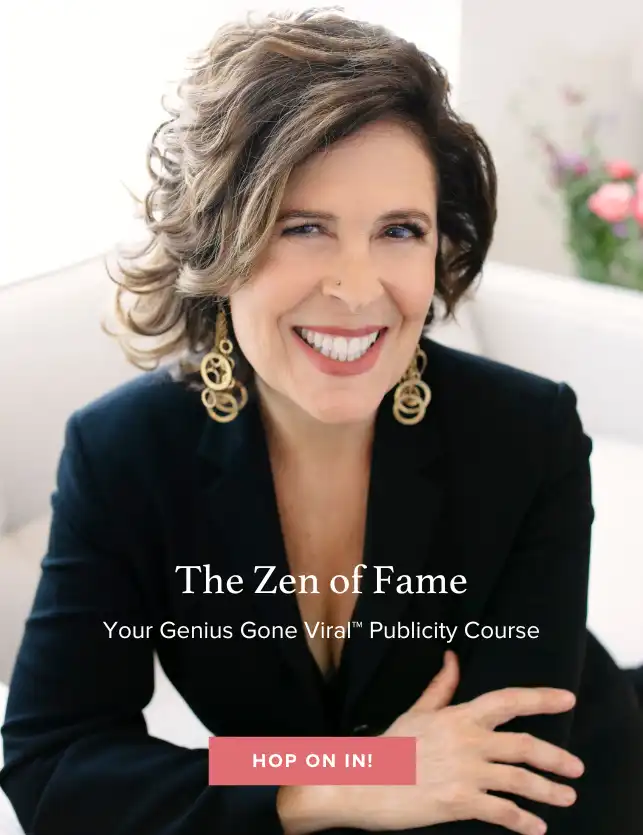How To Look And Sound Your Best In The Media
From Story To Impact With Steve Gallegos
Steve Gallegos: Hello ladies and gentlemen. If you were tuning in to from Story to Impact, I’m Steve Gallegos, your host and the co-founder of Voices of Impact Awards. We’re so excited that you’re here today because I’ve got just an excellent, phenomenal guest from the media and public relations industry, ms. Susan Harrow. We’re going to bring Susan on here in a moment. She’s going to say hello to you and we’re going to invite Susan just to deep dive with us during the short time that we have with her. To get to know her and also for her to share some of the secrets about why storytelling is important and why it’s relevant today whether you’re a business owner, entrepreneur or even just a private individual. Because sometimes, as you can see in today’s news, you may find yourself inadvertently the subject of a media story. You will want to know how to handle that.
Steve Gallegos: The best person I know on the planet to help you do that is our guest, Susan Harrow, who’s coming to us our studio from San Rafael, California, just a beautiful city up in Northern California near San Francisco. Susan, welcome to our studio today. Thank you for joining us.
Susan Harrow: I’m so happy to be here and I love that you already know the surroundings of where I live. I have actually been to where you live too and hiked up some huge mountains in that very thin air.
Steve Gallegos: Yes, there are huge mountains and the thin air will get you. Yeah, that was something that we had to acclimate ourselves to. We still do, right? We go to the gym, my wife and I, three or four times a week and we consider ourselves healthy and fit. Yet when you get out there still, I don’t know when you were down here, did you experience there are these steps that you climb? “Honey, do you remember the name of the steps?” I’m asking my wife. Something inclined, Manatou Incline, which is in the south, in Colorado Springs, and it’s like 2500 steps from ground zero all the way up into the sky.
Susan Harrow: I’m happy to say I didn’t do it.
Steve Gallegos: People train their lives for that. We do have one guy here that is a local that runs those steps every single day.
Susan Harrow: Wow.
Steve Gallegos: He runs them right there.
Start with Local Media Interviews First
Susan Harrow: Well, I love that you brought that up because obviously, he didn’t start with running 2500 steps. No, you can’t run a marathon before you walk a mile. I’m sure he started slow and built up. I think it’s the same thing with media.
Lots of people, when they first come to me, they want to jump right into national TV. They want to be on CNN and ABC and Good Morning America. I highly recommend that they practice first locally on their local TV station so they can get the feel of what it’s like and also the sense of the rhythm and timing, and then build up to national TV so everybody can start where they are and start in their very own hometown. I also recommend, obviously, that you don’t start with TV first. It’s just like if you were on stage as a speaker, you’re not going to start speaking to hopefully 1000 or 10,000 people right away.
You start with because the energy is so different. You would start with ten people and build up to 50 people. Because managing your energy and managing the stage with more and more people in different stages, it takes a lot of practice. So it’s the same with media interviews. I love your energy with managing the studio or the situation that you’re in. Lots of times now it’s at home, but sometimes you’re going to be in studio.
Steve Gallegos: Wonderful. And that is great advice. That’s just beautiful wisdom to start off with this particular segment because the audience that’s coming to the Voices of Impact awards is quite a variety of people. We have celebrities and we have people that are in the media already, that are public figures. We have folks and this is the majority of our audiences, folks that have probably hinted at the idea or toyed with the idea that maybe they want to share their story and maybe they want to get out there, but they haven’t taken those next steps because really there isn’t a platform for them to do that. We’ve created that platform, and now they’re coming to terms with, what do I do now? We talk about getting exposure, we talk about media.
You’re right. So many entrepreneurs are. I want to get on Good Morning America and CNN and Fox and national. Right. And your wisdom is start local first. Start speaking on one calls like this, like you and I are having now, just getting used to your voice, getting used to your platform.
Susan Harrow: Getting used to people responding to you. When I was teaching at the Learning Annex, you don’t know what was going to play. You think that you’re wise and you think that you’ve got great stories, but you need to test it out in an audience, and it needs to get verified to get that energetic exchange.
Is this really landing? And that’s when you can see. I remember wondering, why are people laughing now? Or what did I say? And then shifting. And iterating that speech. I was just media training a CEO of a company that just got $50 million in series C funding to expand, and they’re all already worldwide. When we’re working, he’s actually going to be speaking on a stage of 1000 people, and he hasn’t done that before. He has eight minutes while we have to tightly script what I recommend and what he wasn’t used to doing as we started workshopping it, meaning we were just playing.
We were just talking were just like, tell the story. Sometimes people like, write it out and it becomes very stiff because writing is different than speaking. And he wasn’t used to that either. He was like, I like to work from a script. And I said “I understand that. Since we’re here and we just have an hour, let’s start telling the stories, and let’s see what happens.”
Because different things come out when you’re relaxed and you tell the story just fresh, like in the moment when you’re relaxed. You can get back to that relaxed feeling and see how the stories come out. By the way, I had media trained their other CEO and they had their core story (their signature story of the company) that they had always told them the same way. When he told it to me, he told it differently and he told it better. The next time they used it when they had a media interview. That’s what got printed.
Right after that, they used the new story. So practice out loud. Practice with an audience, even if it’s just your friends or one person, to see how that lands, to see what stood out, what do you remember? Can you repeat back to me what you heard and just listen to what they say? What pops?
Steve Gallegos: Right, Susan? That’s beautiful advice. Do you recommend that you practice in front of someone that really knows you because they know you, or someone that doesn’t really know you because then they’re more apt to listen?
Susan Harrow: I would do both and see what the response is. The more people you can practice in front of in different types of audiences, the better for you. If you can set up those kinds of practice scenarios, I would do it.


Steve Gallegos: Yeah, wonderful. Good advice. Before we get into even more great details and wisdom from you, I know we could spend all day with you and we still wouldn’t get to everything we need to know. Tell us, Susan, about you. How did you get into this? Because nobody is born into PR and media and has the savvy and wisdom and experience that you do. So what was your journey? How did you get to this space?
My Journey From Start-up, HR Consultant + Publicist To Media Training
Susan Harrow: Well, it’s kind of a long journey, starting with I majored in Shakespeare and I also worked and I had quite a lot of jobs, but I worked in advertising. I thought I wanted to work in advertising, but I also worked for several startups in high tech sales and I was also a consultant in HR in Pacific Bill Directory. The way that I built my business is I built it as I was growing. I started working with a gal who did PR for the North Face and Bill Graham Presents and the Telluride Festival. I just thought, let me trail her and see if I like it. I just listened to her on the phone. It was phone before it was this.
Steve Gallegos: Was actually for email rotary dial phones.
Susan Harrow: No, there was no push button. We blast faxing first was revolutionary. One of my first clients was a high-tech computer, Larry Maggot, who’s a technology columnist. He taught me how to do Blast emails. I was learning from him to do the PR for him. So I worked with her. One of my very first clients was Missy Park of Title IX sports. She was just a two-person. Now she’s one of the largest retailers in women’s sportswear today. What I found was I could get my clients booked. I booked them on Larry King Live and Oprah and the New York Times, the Wall Street Journal. Sometimes what would happen is a big nothing. I started looking at what was happening. What was happening is they weren’t saying things that were compelling, they weren’t telling those stories that were driving and engaging the audience. I started working with those clients because they were telling me, “Susan, it didn’t sell my product or book.”
I’m thinking, well, that’s not my fault, right? I did the booking and so I started working with them and I loved it so much. I moved full-time into the media training aspect where I work with people, so everything they do say is in sync from their words to their websites and alignment. They reach out to the media, it has the effect that they want and that they’re saying the kinds of things that really connect with their audience. And it’s the same in speaking. It’s like if you’re speaking to lawyers like you, it’s going to be different than you’re speaking to housewives or entrepreneurs. You’re going to have to angle your message to them. I was talking to a woman, I was immediate training, a woman who is expert in the different kind of metaverse. And she had just lost. She had spoken to VCs and she didn’t get the money.
I said she had already given me her talk. I looked at her talk that she had spoken about to architects and she goes, I gave the same talk. I said, well, that was fantastic for architects, but VCs have a totally different need and a totally different perspective, but she didn’t know yet how to modify that. She has a fantastic background and lots of super success, but she didn’t know how to modify that for each different audience. That’s going to be essential for people who are working with you to do this talk to make sure it resonates with the audience that you’re in front of.
Steve Gallegos: Yeah, beautiful. How does one go about identifying the audience? In other words, what do you recommend that they do in that regard? Especially when you’re being asked to speak to members of the general public. Right. It could vary from college students to retired folks who could be in the audience, right? In other words, when you’re being invited not to speak to lawyers or doctors or entrepreneurs, members of the general public, which is what the voices of impact are, the general public is going to be listening in some respects. They’re going to be voting on some of these stories and some of the presentations. What is your recommendation there?
Universal Stories That Will Resonate To The Audience.
Susan Harrow: What are the universal stories that are going to resonate, that are going touch the heartstrings of people? Because stories, why stories are important is number one. When we tell a story, our brains sync up together. Neuroscience says we sync up, our breathing syncs, and our story syncs. We’re already in a deeper relationship with each other. What you want to think about is what stories are going to be important to the audience. You might actually even create different stories for people who are in the audience. Like, a person who’s retired is going to have a different they’re going to care about their grandchildren and about doing leisure things, and somebody who’s in college. They’re going to be thinking about the brave new world that they’re entering and new exciting adventures. You want to think about telling stories. Maybe that resonates with each group for a different reason.
The great thing about stories is that you can wrap them up and make them relevant to any audience. Sometimes that same story can be told, and then you can have three different lessons that resonate with your different markets, right? It can even be the same story, but you angle the last couple of lines specifically to whoever you’re speaking with. Does that make sense?
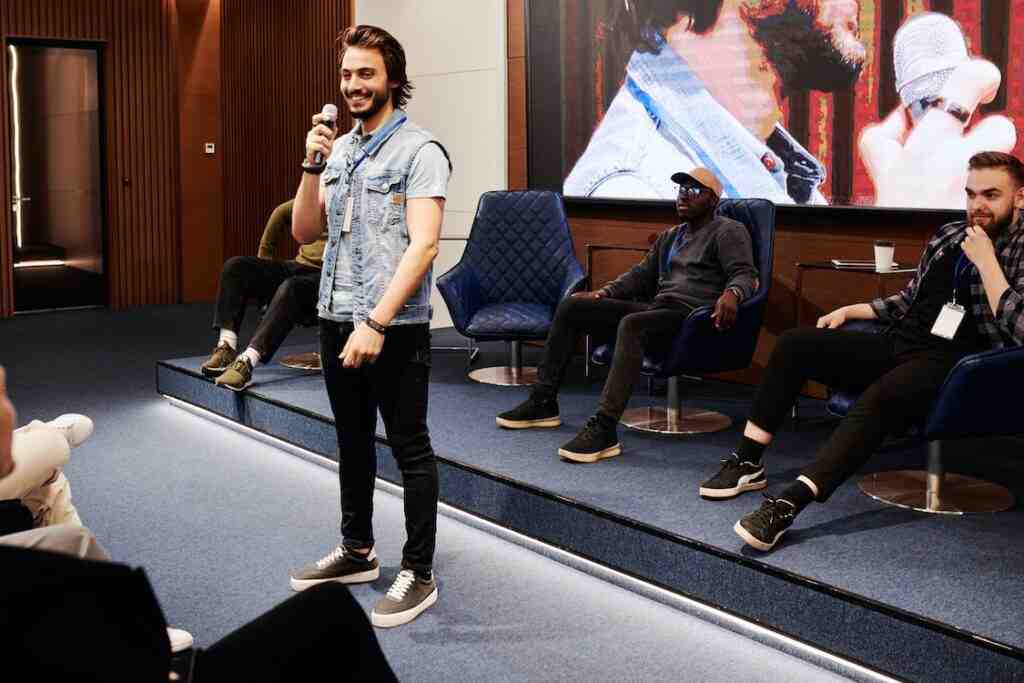

Steve Gallegos: No, absolutely it makes sense. One of the ways that we like to explain it is that a story is simply a series of events that you have experienced, that you have gone through in your life, or maybe you’ve observed somebody else going through that have impacted you or you’ve learned from. The idea of Susan is explaining, if I get it right, Susan, if I get it wrong, let me know. If I get it right, is that you take these series of events and put it together into a framework that will resonate with the entire audience. You take from that story perhaps two or three teaching points. If you know that you have college students and you have stay-at-home single moms, perhaps, and that you have entrepreneurs, maybe from your story develop a point that would apply to the college students, one to the stay-at-home moms, and one to the entrepreneurs. Is that essentially what you are?
Susan Harrow: That is I like that. Yeah. Thank you for clarifying. It is the teaching points at the end. I was media training an executive for who I was hired so he could enhance his executive presence and his leadership qualities. There was no hire where he could go. He was speaking to audiences of 800 people, but they were different within the company. There were three different audiences. He had to keep everybody’s interest, even if he was telling. We incorporated some boyhood stories that he could connect to the points that he wanted to make on his pitch deck, on his slideshow, right on his PowerPoint, and make sure that every single each of those three groups was still engaged by it. Those are the kinds of stories that we work with because otherwise and his presentations were 3 hours. Imagine trying to keep somebody’s attention I know for 3 hours.
That’s none of us right anymore. That was something that we worked on with those stories that could resonate and I think sometimes when we talk about like childhood incidences or things that we know are universal to people, we really want to be thinking about that. I don’t know if you wanted me to tell one of those stories.
Steve Gallegos: I’m going to invite you in a second to share a story. You said something very critical that I think requires more distinction here. You indicated that the CEO, this executive was sharing a personal story or was maybe wanting to get more attention for himself. It just dawned on me that there are different I think you’re suggesting there are different types of stories because your story can be based on or the aim of your story. I think what you’re saying can be based on you becoming the hero and becoming more famous or whatever it is that you want to achieve. Yet there are stories that are designed to perhaps sell books or move products or services.
There are stories that are designed to highlight something about your company that’s got nothing to do with sales or nothing to do with you personally and a myriad other types of stories. Right. Can you walk us through just the types of stories that we might want to focus on?
The First Story Is Your Signature Story.
Susan Harrow: Yes. The first story is your signature story. It’s why you do what you do or why you’re standing on stage. What’s your point there? And that’s the one. We are going to offer five different templates to do that. They’re not all of course there are more than five. From me listening to thousands and thousands of interviews, I’ve found five that are standardized. They can be told very quickly. For a speaking engagement, sometimes it’s a much longer story. For media, it’s going to be very short. TV is the shortest, but podcasts are more forgiving. In speaking, one of my clients would tell a story in 45 minutes. He was a motivational speaker. His very first media appearance was on Larry King Live. The second one was Oprah, right? We had to take those 45 minutes and turn them into 45 seconds. You want those stories to be expandable and collapsible like that.
So to your point, different stories. You want to have your core story, your signature story, why you do what you do, why did you write your book, and why did you start your business? Why are you talking to me today? You want to have success stories of your clients or your experiences. Now, if people are new in business or whatever, it doesn’t matter. I mean, it doesn’t have to be a formal business. It can be just some way that you’ve connected with someone that’s made a difference in their life. If you are promoting a book, for example, or something specific, you want to have stories that relate to how your interactions with people have had some kind of impact or result for them. Because that’s what we’re looking for, the experience of whatever it is you’re offering. Right? We’re looking to feel it, we’re looking to experience it.
For example Nike, it’s not really about shoes, it’s about “Just do it” and being the best person that you are. We’re talking about we had to start small with those steps. That person didn’t run those 2500 steps. I remember when I was in college at UCSB and I was running 12 miles a day and I remember this woman coming up to me and saying, I really want to start to exercise. And I don’t know how. I said, start by walking for 1 minute. If you can walk around the block or around one part of the campus, start there. Because she had never exercised before. It was just one of these crazy things. When I went back to visit that woman who I didn’t even remember, it was a year later I went back to visit some friends on campus and she came up to me and said, what you told me totally changed my life.
I’m now running 10 miles a day. I’m like “What?!!” Right? So it was that starting small. I really believe in starting small. Anything that you do and taking those micro-movements and just start anywhere, start where you are, but just start small and start to gain some proficiency, competency. Some people believe that confidence just comes to you. It’s really when you start to become competent, your confidence raises. It’s that competency that gives us the actual experience when we start. It doesn’t mean we’re not going to get nervous. I still get nervous. I’m still nervous. I was still nervous to talk to you. I don’t know, you should be. I still get nervous before any of these. It’s just the way it is. To just acknowledge that and turn that into more I was excited, but I was also a little nervous, and then I do exercises to calm myself down so I can relax.
Steve Gallegos: Wonderful. I’m glad you shared that and thank you for all the beautiful illustrations that you’re providing. I mean, it’s just so wonderful to be able to interview someone with your experience. Before I go to my next question, did you say that you graduated from UCSB or D?
Susan Harrow: Oh, I went to UCSB. UC. Santa Barbara and I graduated from UC Berkeley. I went to UC Berkeley, and I graduated from there.
Steve Gallegos: I was a sheriff’s deputy with Santa Barbara County Sheriff’s Department, and I worked in Ila Vista.
Susan Harrow: Well, I used to run on the beach and run around that lagoon. I ran on the beach in the morning and around the lagoon in the afternoon.
Steve Gallegos: Well, I’m pretty sure I never gave you a ticket because you were too fast.
Susan Harrow: I think you’re way younger than I am, so I hope that you weren’t there at the same time.
Steve Gallegos: What a beautiful time. Great. Susan, media and public relations are all centered around stories, right? Where people it’s all about stories. That’s news. It’s all about stories. What happened? What is it important about what happened that we can share those kinds of things? You are a master not only at helping people develop and share their stories, but you have probably heard thousands I mean, as a lawyer, I’ve heard thousands of stories. You probably have hundreds of thousands of stories because you’re in and out of it every day, multiple times a day. Do you have a favorite story that you like to share that can kind of serve as an illustration of the kind of things that we’ve been talking about with our audience?
Susan Harrow: You mean about me?
Steve Gallegos: About you, about your experience? Is something a story that you like to share from stage or not or maybe something over coffee?
Effective Ways To Tell A Story
Susan Harrow: Yeah. I haven’t really told the story on stage, and I’ve told maybe parts of it in a video, but I think this will be the first time that I’m going to tell it in this way. I do recommend that you play with your stories and try them in different ways for different audiences and find different parts, and then that way you can find the most effective way to tell it. When you have different time frames and different audiences, you want to tell it, be more expanded or more details and just play with that aspect of it.
Steve Gallegos: Right.
Susan Harrow: So, yeah, I was thinking about this morning. I’m a black belt in Aikido, and before that, I was a teaching tennis pro, so I consider myself an athlete. When I got onto the mat in Aikido, I’m so awkward. It’s like dancing. I was the worst kid. I would be the kid that was chosen last in soccer. And in fact, that’s what would happen. We would have to pair up in Aikido. You bow to the person next to you and you then train with them for a certain amount of time when a technique is shown and people would literally get up and run to not train with me. That’s how bad I know. I was thinking, oh, now I know what the kids who get chosen the last feel like. It was horrifying to go every single night because I was so stressed out about like, is nobody going to want to train with me?
And I was so awkward. Every single night I would actually go and cry afterward in my car. Never on the Aikido mat because that is not the warrior spirit. Every night, literally, I would be in my car and going, I love this so much. I hate this so much. I really love-hate, and I want to be good at it. It’s so beautiful. And I’m not. And so I kept training. I trained 2 hours a day, five days a week, every single day, and it’s just very little improvement. One night I went to a training with a senior student there. He said it was not our sensei and I’m being awkward. He says in front of the whole class, “Susan, you’re always doing your footwork wrong and it’s totally cattywampus.” Usually, on the Aikido mat, you do not single out people and embarrass them in that way.
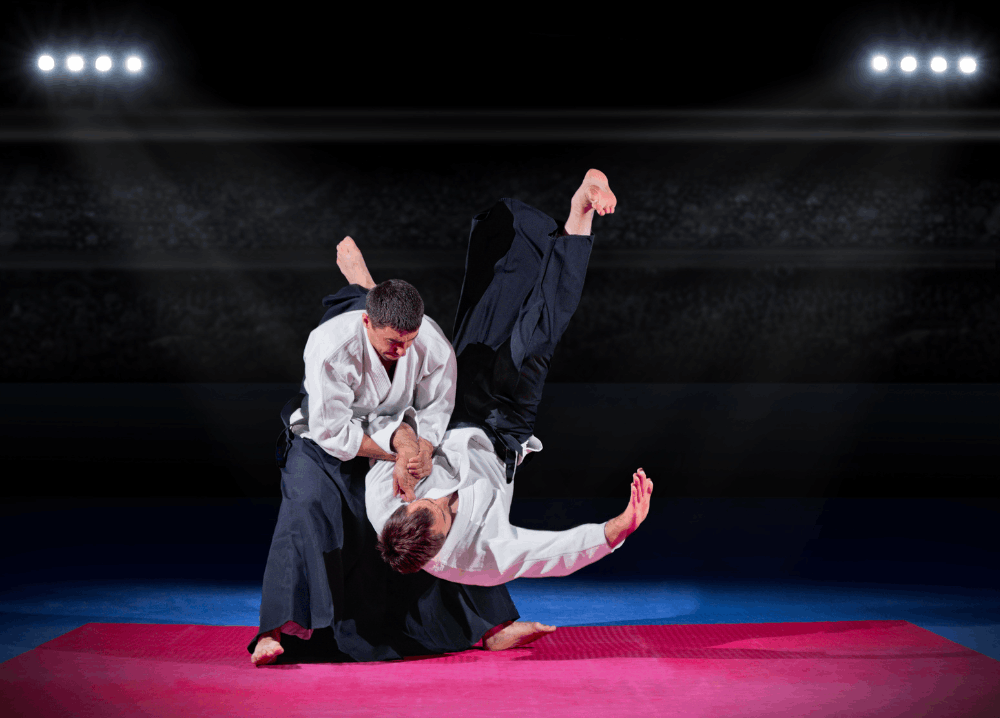

Susan Harrow: If someone’s having trouble, you share it with everyone. Because most people may be having that same trouble, but not this. It felt like I was pointed out. People were mortified and there were new students in there who were experienced black belts and people just everything just stopped. I thought I wanted to maintain my equanimity and not give it any energy because even if when you give something negative energy, you’re still giving it energy. I’m just going to try to do the best I can with my footwork and improve it. I came home, I told my sweetie about that and he’s like, “Why do you keep going to this guy’s class?” I said, “Because the spirit of Aikido is to turn lead into gold and to polish my spirit. I will go to this guy’s class until that doesn’t bother me anymore and until I can master myself and be a beautiful aikidoka on the mat.”
Okay, we’re talking about creating, then a teaching moment. If I wanted to create a teaching moment, I would say probably three things. Number one is iteration. It’s not doing 10,000 things the same way, doing 10,000 times iterating and changing and improving each time. And that’s what we do in media. You have a media appearance. We look at what do you do? Right? What do you want to shift for next time? You keep getting better and better. Same as speaking the stage. Did that story land? What part didn’t work what is working, what isn’t working? The second part of that is mastering yourself. When you’re on stage or when you’re in a media appearance, you may get thrown off center, and it happens. You get a question that you didn’t expect or a person heckles you or something happens. It’s about when you get thrown off center, being able to come back to center, breathe and respond from a place of kindness, compassion, humor, whatever that is.
I think the third thing is polishing your spirit, which is really PR. Media is not as much about growing your personal self as your professional self. The more you can command your own self. It’s not about commanding others. It’s about connecting with others and commanding yourself. Those would be three lessons that I would take from that.
Steve Gallegos: Wonderful lessons. I take it before I ask you more about the lessons, you got your footwork right because you became a black belt, but.
Susan Harrow: Not a pretty one. I’m not graceful, beautiful I am a black belt. By the way, in the dojo, we’re considered when you become a black belt, you are now teachable.
Steve Gallegos: So it’s really teachable. Wow.
Susan Harrow: Yeah. So it’s not considered mastery. It’s considered you are somewhat competent.
Steve Gallegos: Wow. You’re just beginning at that time.
Susan Harrow: Now you’re teachable once you’ve got your black belt.
Steve Gallegos: Wow, look at that. Does that same philosophy holds true in storytelling? There ever a point, perhaps, is there anybody on the planet that you know that is just a masterful storyteller? They don’t need any further development?
Anyone Can Be A Master Storyteller.
Susan Harrow: No, I think everyone can develop further into a master storyteller. Someone on stage who we can learn a lot from is Jerry Seinfeld’s timing body. He’s a master at getting us to laugh. Right. And that’s part of it. No, I think that we can all always, and in the media realm, it’s expert, authority, and thought leader. But there are always things to improve, always. Even with my clients who are regular commentators or top thought leaders or New York Times bestselling authors, they always come to me with their, “Oh, what?!” Moments of “This is what happened. Oh, my God, I was caught off guard.” I think it’s 100% of the time you’re growing and learning new things, and I think it’s infinite.
Steve Gallegos: Yeah. Wonderful. I happen to agree with you on that point, all your points. I’d like to make the distinction when I’m coaching or speaking from the stage when we talk about this idea of personal development and the idea of striving for your potential or reaching for your potential. When I hear people say, I want to reach my potential, I go, no, you don’t, because once you reach your potential, that’s it. You’re maxed out. There’s nowhere else to go. You don’t really want to reach your potential. Where do you go beyond your potential?
Susan Harrow: Potential. You don’t know what you’re capable of.
Steve Gallegos: Exactly. I reach every day, every moment, and this is what you’re talking about in the iterations and the self-mastery is that perform, deliver, work, and show up to your best capacity, to the capacity that you have at that moment. The more you do that through the iterations that Susan is talking about, you’re going to develop more and you’re going to develop more. And so your capacity is always growing. Your capacity is ever-growing so long as you keep Susan called them “iterations.” We do call them practice.
You might know them as rehearsals. I love the fact that she pointed out, don’t keep doing the same thing over and over again, expecting a different reaction from the audience. You need to change up what you’re doing, how you’re doing it, your body language, how you say, perhaps your tonality. There are just so many things that go into this until you get that connection with the audience, right? That’s the iterations. And so don’t do it.
Susan Harrow: Rhythm, pacing, pauses, voice variation, movement on the stage, how do you use your body, all the dimensions? Because most people, walk back and forth, but we have top, bottom, side, spinning, arms, and up arms, right? We got all kinds of ways we can use our bodies excessively. That’s why I brought up Jerry Seinfeld, too, because, sometimes the slightest movement, that’s what makes you laugh. It’s the pause or the pop, right? It’s all of those kinds of things.
The CEO that I was just media training, he was, “I’m kind of monotone. What should I do?” I told him, “Well, work on the pacing and the pausing and try it another way. And what do you want to emphasize? Where do you want the audience to wait?” All of that is in practicing a story in different ways, pausing in different ways, emphasizing it, speeding it up, slowing it down, legato, staccato, right? Musical terms, musicality of it, all of those things. We’re looking at all of those things when we’re looking at how you command yourself on the stage.
Steve Gallegos: Wonderful. When you’re talking about pausing, a lot of people find that very awkward and discomforting. Silence, how do you recommend that people include silence as well as deal with silence? Like, if you’re a speaker and you posed a question and there’s immediate silence, you might want to, I don’t know, try and fill in the gaps. Or if you are intentionally using silence, what do you recommend there? In other words, how do we employ silence?
Susan Harrow: Judiciously.
Steve Gallegos: Judiciously.
Sound Your Best in the Media: When To Use Silence?
Susan Harrow: For you to get comfortable with it first, then what happens? Because sometimes, particularly, for example in a negotiation, you don’t want to speak, you want to wait. It can be uncomfortable, but to start to get comfortable with the discomfort of it now, there can be lots of things that are not having to do with that. When you’re asking a question. Because here’s one of the issues I know that comes out a lot in book talks, authors, because I have media trained a lot of authors, right? When you’re in a mode, meaning you’re the one who’s delivering and the audience isn’t asked to respond, and then suddenly you’re asking them to switch from listening mode to speaking mode, a lot of times what happens is nothing because an audience is in the receptive mode. What I would recommend, because people learn best in movement, is you get your audience participating right away.
You ask them to participate, you’re schooling them on how to participate first in small things, maybe just say “Yay!” or “Raise your hand” or “How are you?” Or whatever that is that you’re doing. How many of you think this? Raise your hand. So you start to get them moving. You are asking for something, then the expectation is that they will respond. You need to give them that instruction and make it safe for them to respond by asking for little things first and then going up to bigger, more, perhaps more uncomfortable things. That’s one of the intrinsic things about the energetic, which is sometimes people go, well, it didn’t work. But wait, it’s not working because the question might be too hard or for any number of reasons, I think. We want to look at that and other ways silence is to use where you really want people to think, or you want to let something sink in.
It’s actually a gracious gift to the audience to give them some time to absorb it. You’re having, a call in response. It’s not just you. There is a kind of call in response anyway, even if your audience isn’t speaking. Oh, you’re looking at those and you’re.
Steve Gallegos: Just thinking, no, I was being silent.
Susan Harrow: I assume it’s a little harder to read. I’m like.
Steve Gallegos: No, I was practicing what you just showed us and being okay.
Susan Harrow: Because I was, frozen.
Steve Gallegos: No, I was reflecting on what Susan said. Yes. Before I respond, let me just think about this and let it sink in. Yeah, it can be uncomfortable. I know that a lot of people need to get over that. The information, the wisdom you just shared on that, the guidance, is going to be very helpful to them. You mentioned something, you said gracious gift, and I want to recognize you for being the gracious gift that you are to our organization, the Voices of Impact Awards. Because one of the reasons that we created this event. This annual year-long event. Not just to give people a platform where they can share their stories and open up to the world about what they’ve experienced. What they’ve gone through. And what they can teach the world. Because we all need that. Regardless of our stage in life or stage in society.
Whether you’re a CEO or you’re a five-year-old child. We all need stories. We all live for these stories, right? They help us get through the day and through tough moments and even happy moments. You, Susan, having you as one of our mentor official resource partners is a beautiful gift that you’re giving up your time to our audience, the time that you’ve given us here today on this interview, and there will be other interviews with you, Susan, just so the audience knows, oh, we want more. Yes, you’re going to get more of Susan, but just not today, right? We’re going to space it out so that she doesn’t get tired of us.
You also have a gift for our audience. Anybody that goes to the website just to even look to see what we’re doing at the Voices of Impact Awards can receive a free gift from Susan and share with us about what that is. You talked about it earlier, some signature story templates.
Choosing The Right Format For Your Signature Story
Susan Harrow: Yeah. Through really analyzing thousands and thousands of people on TV from the stage, I came up with five templates that are simple to wrangle your signature story. Now, does everybody’s story fit exactly into that? I was just with a client yesterday. She’s a cybersecurity expert and diversity inclusion expert, and I had given her that sheet, and oftentimes we have more than one signature story, by the way. Were working on the signature story, and it wasn’t like, working, and she goes, I used your format. I go, which format is it? And she told me which one. I said “Well, it didn’t sound like that format. You added in all of these other things, so that didn’t actually work.” I said, “It’s not about trying to squish your story into a format. If these formats lend themselves to the story that you want to tell, choose the one that fits.”
If it doesn’t, choose the format for you, that maybe is a variation of that. I want people to know that this is flexible. This is flexible, too. If there need to be other added details to it, you are free to play with it. But we have the five templates. It’s called your signature story, and they’re the five templates that are filling the blank. It makes it super easy to get started, especially if you and you can do all five. You might use all five of them and you might use a different format, but it’s just to give you the flexibility and freedom to play with that wonderful.
Steve Gallegos: That’s going to be so valuable. Essentially, what Susan is giving you folks is recipes, right? Like she said, not every story fits into this particular template or specific template. And so you’re free to modify it. Just like if you had a recipe for what in my favorites chocolate chip cookies. If you want to add more chocolate chips than the recipe calls for, do it right. Exactly. More sugar, more butter, whatever you want to do, modify it until it suits you and helps you not only develop write your story, but to deliver it as well. Now, Susan, we’re giving them of the preparation to sharing their story on a big scale. What happens when one of our audience members wants to work with you? And they should. We’re going to encourage as many of them as can and want to work with you because we want to develop people.
Right. The reason we’re offering you is not just so they can go and share their story and say goodbye, but through the process of sharing their story, you’re also growing, you’re evolving, you’re becoming better. Whatever it is that you do, whether it’s your CEO, you’re a parent, you’re a community leader, you’re a church leader, whatever it is that you do, we want to make you better. Making Susan available to you will help you do that. Understanding her time is very limited. So, Susan, I want to ask you, what types of projects or individuals do you work with? Do they have to have a certain status? Do they have to have a book? Do they have to have media calling them, what’s the best way to work with you?
Is Media Training Applicable To Everyone?
Susan Harrow: Yeah. I love that you’re talking about all those different types of people, whether you’re a church leader or a parent or a soccer mom or already a leader in your community, or a founder of a company. I love that you included everyone, and I think that’s really beautiful. And thank you for offering this. I think it’s so valuable for people, and not just to win the prize, but to really develop yourself and develop your stories and really connect with people. I work with people and you ask, I work with beginners and I work with people who are already famous and celebrities. It really doesn’t matter to me what stage you are in. Some people already have a PR firm booking them. That’s ideal because we have a container and we know that you are media-worthy. Sometimes people come to me and they don’t have that.
I was just talking to a doctor who wants to write a book, and she’s got a very unique angle. I said, let’s find you a PR firm, and then I’m going to media train you. And we work hand in hand. That’s how I work one on one with people. They want to work with me very intensively. The next level is with my The Zen of Fame: Your Genius Gone Viral® course. Which is a publicity course that shows you how to develop your message. Create your systems behind the scene. Because publicity assures people through your door. You need to open it so it’s hot leads that come to you but you have to have a system to process those leads and put people through whatever that is. Whether it’s a phone call. Your website to move people into your container. Whether it’s to engage with you for free or to hire you or take your courses or whatever that may be a creative partnership.
The first part is creating your messaging, because you want to create that before you reach out to the media, because you want to be able to explain your business and brand and what you stand for and your philosophy and what’s connecting with the audience first and the system set up. The last thing is to create a PR campaign that suits your style and suits your energy. So it’s those three aspects. So you can take that. Now, I’m starting a mastermind where you work with me in a group while going through that course at your own pace. The last level is if you just want to take the course on your own, you still get one private call with me to jumpstart it, but you take the course and just self-paced on your own. I’ve had people in the past when I first started this and I had it all separate.
Some people zoomed through the course on an airplane, right, and other people took a year to go through it, so it’s really your own pace. They come back and take it again because it’s a lifetime. You can access it whenever you want. So those are the three levels. I invite anyone to engage with me at whatever level is best for them. If none of that’s right, I have lots of free things on my website. Go to my blog at prsecrets.com, I think it’s /blog and things will pop up. On that page, I also have lots of other free offerings, so you can tap into them wherever you’re interested.
Steve Gallegos: Wonderful. That sounds beautiful. If any of you are at the point where you believe that you need media training or if you think you’re going to need it here in the near future, I highly recommend that you connect with our official resource partner, Susan Harrow, to guide you through that. Because I don’t know that there’s any other person that is better suited and better equipped and with the experience that she has to assist you through that. I mean, you’ve heard it in this interview, right? In fact, I’ve been in the media and I’m always learning. I’m going to go back and listen to this interview a couple more times because she just said some really powerful and helpful nuggets. In closing, Susan, I wanted to make a point here as the audience is listening to you, they’re watching you, they’re looking at your beautiful office set up your demeanor, your posture, and everything, and they’re going to get the sense as I do that?
You are the ultimate professional. You are polished. You put in the time, you put in the work. You have a work ethic. You’re the kind of person that shows up in your personal life as you do in your professional life, which is at your absolute best. People watching this, people entering the Impact Speaker Awards or the Voices of Impact Awards, some of them are just beginning. They’re going to look at you and they’re going to look at Susan’s ability to tell stories and her ability to speak and articulate her thoughts. I could never do that. I can never be like Susan, man, she’s really good. What would you say to that person so that they feel comfortable enough to step into the ring, if you will, without having to compare themselves to you or me or anybody else that they might look up to?
Susan Harrow: I don’t want you to be like me.
Steve Gallegos: Right.
Susan Harrow: One of my favorite things is Oscar Wilde. What did you say? Oh, my God. Now he’s facing out on that. It’s one of my favorite things. Which one I’m talking about?
Steve Gallegos: I do not.
Susan Harrow: We can, by the way, if you ever stay out like that. Ask the audience, “What was I saying?” “Be yourself. Everyone else is already taken.”
Steve Gallegos: Be yourself. Everyone else is already taken.
Susan Harrow: Everyone else is already taken. Yeah, because that’s what we’re looking for. We’re looking for your originality. We’re looking for your quirks. I’ve had training in all of these different areas and worked with transformational speakers and all of that. What we want to do is look in your background and find there’s not one right way to do it. There’s all these different types of speakers. I would recommend people start listening to The Moth. If you haven’t, The Moth: The Radio Hours of Podcast, you can hear, all these different types of speakers, which is so fascinating. There’s not one right way to tell a story or be a person, but you can learn so much from somebody’s style and the way they tell the story and where they pause and all of that. So it’s finding your own way.
Lots of times we start with, oh, I want to be like that. That’s fine, too, to look at people and go, that’s one part of something that I want to master. Instead of having it be insecure or imposter syndrome, say, how can I practice that? How can I rehearse that, whatever your word is. How can I role play that so I can start to embody that quality. What do I need to do and how do I need to think and how do I need to be? How do I need to breathe to begin to shift myself in something that maybe I don’t like so well? I think that’s an iterative process. I was thinking about this saying by the Dalai Lama, “Be kind whenever possible. It is always possible.” But my caveat is it’s not easy. Part of that practice is, even when, I’ll have a bad thought about somebody in line or I’m crabby in the grocery line, and then I say, well, it’s mind training.
Can I shift that at the moment and find something lovely about that person, even though I’m so irritated that they’re going so slow or whatever? That’s a practice. And do I always get there? Absolutely not. Sometimes I’m just so crabbed out. But that’s part of the practice. That’s part of the role play, that’s part of the rehearsal. That’s part of training your mind, training your brain, training your mind, training your body for anything. I’m always looking to other people to see what qualities they have that I want to shift or improve in myself.
Steve Gallegos: Wonderful. What Susan has just shared with us, I think is absolutely brilliant. A lot of us say, I want to be like so and so. I remember when I was pursuing a career as a music recording artist. I wanted to be like Julio Iglesias that was my aim at the time. I hadn’t really thought about it over the years. If I studied personal development to support what Susan just shared. What I came to realize is that I didn’t want to be like him. I was willing and wanting to put in the work that it took that he did in order to get similar results or results that would fascinate and fit in with me. Right? Don’t look at Susan and go, oh, I can never be like that. You’re not being called to be like that or like anybody else. Right. You can certainly emulate the excellent qualities that she has, the excellent advice that she’s giving you, the excellent training and counsel that she’s given us, and do some of the things that she’s gone through in terms of educating herself.
She’s obviously a great reader. So you can become a great reader. She’s obviously a great listener. You can become a great listener. You can certainly get results out of your life like Susan or like anybody else that you admire, but don’t ever try and be anybody else other than who you are, because that’s who we’re looking for, as Susan pointed out. Susan, we are at the top of the hour here. Thank you so much for being here with us. I truly appreciate your gift, your wisdom, your time, and your talents, and so grateful our team is that you raise your hand and you said, yes, I want to support the Voices of Impact Awards and be of service. You’re one of the first, and so we are just truly grateful.
Susan Harrow: Thank you for inviting me, and I love that you’re creating this, and I love your very relaxed presence and it made it so comfortable for me. I think when you’re comfortable with yourself with it johnson, President Johnson said, Be like an old shoe. I don’t want to say that you’re an old shoe. You’re like a Gucci loafer, maybe.
Steve Gallegos: Nice.
Susan Harrow: That is, you’re very posh, but very relaxed and made it so comfortable for me. And I think that’s really important. I think it’s important to make people comfortable and also it’s important to sometimes make people uncomfortable. It is both, but you’ve made it really super comfortable for me. People can really look to you to like, this is what a relaxed presence looks like, with a go-with-the-flow kind of person that’s taken. You were a lawyer first. You’ve had so much experience on the other stage as a lawyer. As a trainer and that thing. That’s what you’re seeing in your presence today. It’s the sum of all of that experience.
Steve Gallegos: Thank you for that. The whole world is a stage. Each one of us are on stage at one point or another. Yeah. Really? You have all these quotes.
Susan Harrow: Yeah. I love quotes, wonderful.
Steve Gallegos: Well, ladies and gentlemen, I’ve certainly enjoyed producing this interview and hosting this interview and having the privilege, because it is a privilege, for me to speak to Susan Harrow and ask her these questions and have her share about herself and her story, her career, and to bring all that wisdom to you. Know that you can work with Susan. She’s one of the official resource partners of the Voices of Impact awards. Go to voiawards.com, the Official Resource Partners, or the Resources menu tab on the website and pull down. You’ll see Susan Harrow‘s name listed there and you can connect with her to get her free gift. She’s also going to be delivering complimentary training to the applicants for the awards. If you want to deep dive and take your relationship with Susan Harrow even further, all the links are on her page, her social media links, and her website, all of that where you can connect with her directly and work with her to elevate your life.
By doing that, you’re going to be able to elevate the lives of others around you, whether at your work, at your home, or in your community. That’s what we’re here for, to help you elevate. So thank you all for your time. Thank you, Susan. Once again. We’ll see you in the next episode. Bye.
Check out our PR and Media Training Workshop to Jumpstart your Publicity
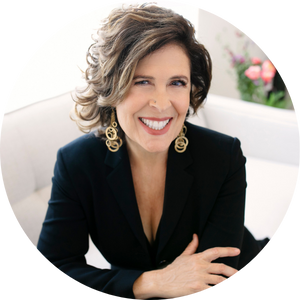
Like what you read? Share it!
Disclosure: Some of the above may be affiliate links that I will be compensated for at no cost to you. They are products or services I’ve either used, vetted or trust. Enjoy!
WE THOUGHT YOU’D ALSO LIKE THESE POSTS





